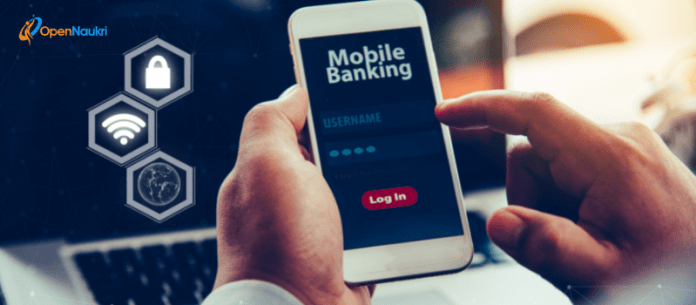PM Narendra Modi on October 16, 2022, inaugurated the setting up of 75 DBUs in 75 districts of India to commemorate India’s 75 years of independence. The full form of DBU is Digital Banking Units. While we may be aware of digital banking which is banking in online mode, DBUs might be something unknown to us. Moreover, this initiative is relatively new although the PM of India, Narendra Modi was planning to implement this important step for years. In this article, we will be talking about “What are Digital Banking Units?”, the transactions you can do at DBU, its benefits, services, DBU list, etc.
So, without any delay let us get to the main article!
What are DBUs or Digital Banking Units?
Digital Banking Units or DBUs are brick-and-mortar outlets that have tablets ( with Aadhar-based eKYC) and internet services to help you avail banking services digitally. DBUs are set up in collaboration with 11 scheduled commercial public banks, 12 private banks and one small Finance bank. DBUs not only deliver banking products and services online but also services existing financial products and services. These products and services must be present on the liabilities and assets section of the digital banking segment’s balance sheet. The guidelines for setting up Digital Banking Units were provided by RBI in April 2022.
The commercial banks that have already provided digital banking services in the past can open DBUs in Tier 1 to Tier 6 centers without consulting RBI.
What are the Benefits of Digital Banking Units?
- Digital Banking Units will operate in different states, Union Territories, and remote locations and will be financially inclusive of such regions and individuals.
- DBUs will make banking products and services easily accessible and cost-effective.
- Those who lack an ICT (Information and Communications Technology) infrastructure will be able to access banking services online.
- DBU outlets will help non-tech savvy people avail banking services digitally.
- It will educate people about digital financial literacy. People will also get to know about cyber security awareness and safeguards.
What are the DBU services?
There are many digital banking services offered by Digital Banking Units which are as follows:
- Opening Savings Account
- Check Balance
- Print Passbook
- Funds Transfer
- Fixed Deposit Investments
- Providing Loan applications
- Digital kits for customers
- Stop-payment instructions for issued cheques
- Credit/Debit cards applications
- View account statement
- Pay taxes online
- Pay bills online
- Make nominations
- Mass transit systems cards
- UPI QR codes
- DBUs will help you onboard with Government credit link schemes via Jan Samarth Portal.
- The entire process of digital processing of small ticket MSME/retail loans will be taken care of by Digital Banking Units.
What are the Differences between DBU and Traditional Banks?
- Unlike traditional banks, with DBUs you can have 24×7 cash deposit and withdrawal facilities.
- Traditional banks operate through interaction between bank officials and customers. On the other hand, DBUs will operate digitally.
- Connectivity and computing devices are not mandatory for an individual as they will be provided by DBUs. So, the entire process is paperless.
- Bank staff present in the DBUs will provide complete digital assistance or guidance in carrying out banking transactions.
- DBU is meant to create financial literacy and inclusion through promoting digital banking.
What are the Differences Between DBU and Digital Banks?
Digital Banking Units are branches or banking outlets that are not licensed under Banking Regulation Act, 1949. On the other hand, digital banks have a legal personality and are licensed under Banking Regulation Act, 1949. Digital banks also have a balance sheet.
DBUs provide regulatory recognition to digital channels so as to improve the channel architecture but there is no scope for competition or innovation unlike digital banks. DBU norm says that only commercial banks can set up DBUs in different states or Union Territories.
What are the transactions you can do at DBU?
ICICI Bank DBU’s includes 2 main features – DBU’s Self-service Zone and DBU’S Digital Assistance Zone. These are described below:
What is DBU’s Self-service Zone?
DBU’s Self-service Zone or mode operates 24x7x365. It provides the following services:
- Access to ATMs
- Access to Cash Deposit Machine (CDM)
- Interactive Digital Walls
- Multi-Functional Kiosk (MFK) offering services like printing passbooks, depositing cheques and access to tab banking
- A digital interactive screen where customers can interact with chatbots and get their queries about products and services resolved. They will also get to know about mandatory notices and available offers.
What is DBU’S Digital Assistance Zone?
DBU’s Digital Assistance Zone will address the grievances of individuals and small businesses either directly or through business facilities and correspondents. Additionally, it will answer all their queries. Branch officials will assist customers in availing services like opening Savings/current accounts and fixed/recurring deposits. There will be two bank staff available in DBU’s Digital Assistance Zone.
Total DBU List Along With Their Banks and States
Who cannot setup DBUs?
The banks which cannot set up DBUs include Regional Rural Banks, payment banks, and local area banks.
Final Thought!
The Indian government understood the grievances of people in small towns or villages taking a day off to travel to a city to carry on their bank-related work. Digital Banking Units or DBUs that will become operational in remote areas will take off the extra load from individuals by providing them accessible banking services digitally. In fact India’s PM says: “We have given top priority to ensure that banking services reach the last mile”. Such DBUs will serve the general population by removing physical as well as psychological distances.
How do you think DBUs will impact human lives in the long run? Share with us in the comment section below.
Frequently Asked Questions (FAQs)
What is Digital Banking Unit?
Answer: A Digital Banking Unit or DBU is a brick-and-mortar banking unit or hub that has tablets and internet services for customers to access banking facilities digitally. It is an initiative towards financial inclusion.
What are the benefits of DBUs?
Answer: DBUs imparts financial and digital education, offers multiple banking services digitally and is accessible to remote areas.
What are the differences between digital banking and online banking?
Answer: Online banking is limited to carrying out banking activities like front-end transactions through internet connectivity while digital banking is inclusive of both front-end and back-end operations. Digital banking is an entire digitised ecosystem for improvement in overall banking experience for customers.
How does a digital bank work?
Answer: Digital banking means online banking that is conducted via digital platforms. Here, you can find and access multiple banking products and services.
What services do digital banks provide?
Answer: Digital Banks provides online banking services like – Funds transfer, Account balance enquiry, bill payments, auto-bill payments, E-statement; recharge broadband, DTH, mobile; UPI facilities; EMI, eligibility, FD calculators; loyalty programs, digital wallet, mobile banking, device banking facilities (SMSes, calls, USSD), dedicated remote advisor, etc.
Are Digital banks safe?
Answer: Banks including digital banks are safe as long as they are FDIC (Federal Deposit Insurance Corporation)-insured. To know if a bank is FDIC-insured, check through FDIC’s BankFind tool.
What are the disadvantages of digital banking?
Answer: The disadvantages of digital banking are that you cannot deposit liquid cash through digital banking and it demands internet facilities. Although digital banking is secure, you maybe victimized through internet fraud.
What are the types of digital banking?
Answer: The different types of digital banking are core banking, mobile banking, internet banking, and doorstep banking. You can also make payments through banking cards (credit/debit), USSD, UPI, AEPS, mobile wallets, and PoS (Point of Sale) machines.
What was the first digital bank in the world?
Answer: The banks started becoming digitized in the early 1990s. Stanford Federal Credit Union in California was the first financial bank to provide internet banking facilities to its customers. It has expanded its services and now serves big companies like Google, VMware, Tesla, Facebook etc.















































